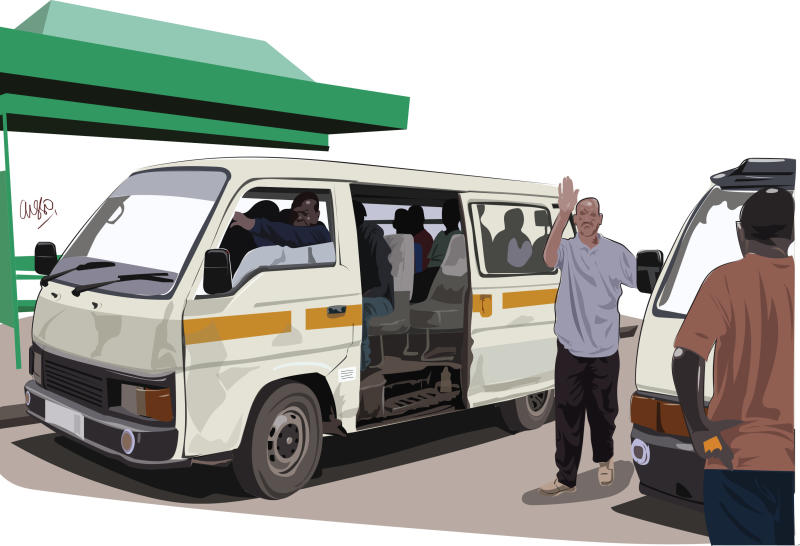
A recent matatu ride into town reminded me of a rumour I heard about three years ago – that 14-seaters from around the country come to die on our route. When I first heard the rumour, I laughed at what I thought was an exaggeration of the situation. I mean sure, our mats are not as fancy as some other ones I’ve seen and heard of – that have luxuries such as TV screens, free Wi-Fi and hostesses who greet you at the door with a smile.
Matatu manyanga
Those fancy vehicles remind me of my university days, when the ‘matatu manyanga’ culture was in. Never mind how badly they were driven, we loved them! And the fancier the paintwork and the name of the mat, the better. But even more important than the visuals was the audio inside – in those days DJs made money creating mix tapes for matatu crews (yes, tapes – this was way before the compact disc came on the scene; then it was just “compact” or cassette tape). Back then it was about more than just getting to your destination; it was an experience. And we were so spoilt for choice that we could afford to snub a matatu because we didn’t like the exterior graphics or because it didn’t play a particular song.
Well, the matatus on our route are a very far cry from those fancy looking ones from my younger days. These ones have just one basic function -- to get you into town and back home quickly. That should be enough, yes?
One morning I boarded one and chose the seat right behind the driver. As I studied the floor to determine the best way to place my feet (it’s a really tight space), I was met by a gaping hole through which I could clearly see the tarmac below. By this time we were already moving so I settled back and prayed that the floor wouldn’t give way and give the press a field day.
I believed that was a one-off, unfortunate incident. Next time, I told myself, I would check the floor before I entered the vehicle. Or change my sitting position. Life went on until I boarded another matatu to town. This time I sat next to the driver and was joined by a woman with a baby. It was a chilly morning and after few minutes the woman asked the driver how to close her window because there was no lever on her side.
Without blinking, he pulled some exposed wires from somewhere around his right knee, touched them together and voila! The pane slid gently all the way up. If nothing else, I was impressed by his prompt response to a customer’s request. Not long after that I decided to give our matatus a break, hoping that they would all finally give up the ghost and we could get some newer ones (brand new would be great but pushing it).
No such luck. The one I took recently was the worst yet – halfway into the ride, the vehicle stalled. The driver did not miss a beat; he picked a set of keys from the side of his door, selected a broken one which he inserted in the ignition, and brought the car back to life. Also sticking out of the side of his door was a bunch of wires that I now knew were the window controls! Besides the steering wheel, gear stick, clutch, brake and accelerator pedals, there was nothing else working – radio, speedometer, fuel gauge... all dead. In another one on the way back, the driver’s door flew open mid-journey. Was he shocked? Not at all. He caught the run-away door and clicked it back into place as if nothing had happened.
The one thing that works on our ancient matatus are the brakes, even though sitting in the front cabin of a 14-seater is quite a hair-raising experience. Many times I have attempted to help the driver by engaging imaginary brakes. That and some great engine power demonstrated by the ability to climb some steep backstreet slopes. Still, I don’t think me or my neighbours would mind it if newer vehicles were to come to our rescue.
 The Standard Group Plc is a
multi-media organization with investments in media platforms spanning newspaper
print operations, television, radio broadcasting, digital and online services. The
Standard Group is recognized as a leading multi-media house in Kenya with a key
influence in matters of national and international interest.
The Standard Group Plc is a
multi-media organization with investments in media platforms spanning newspaper
print operations, television, radio broadcasting, digital and online services. The
Standard Group is recognized as a leading multi-media house in Kenya with a key
influence in matters of national and international interest.
 The Standard Group Plc is a
multi-media organization with investments in media platforms spanning newspaper
print operations, television, radio broadcasting, digital and online services. The
Standard Group is recognized as a leading multi-media house in Kenya with a key
influence in matters of national and international interest.
The Standard Group Plc is a
multi-media organization with investments in media platforms spanning newspaper
print operations, television, radio broadcasting, digital and online services. The
Standard Group is recognized as a leading multi-media house in Kenya with a key
influence in matters of national and international interest.









